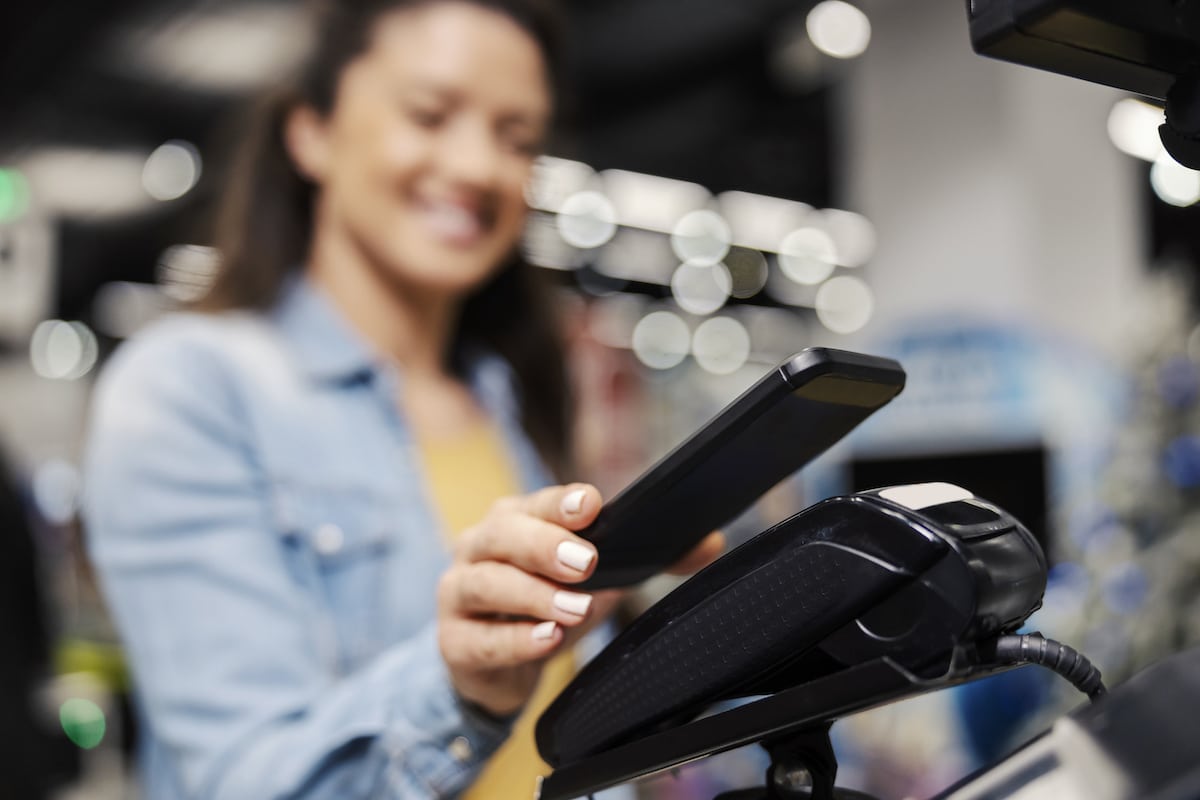How to Create a Customer Loyalty Program (While Creating Customers for Life)
When it comes to brand loyalty, are your customers more Rick Astley (“Never gonna give you up, never gonna let you down”) or more Taylor Swift (“We are never, ever, ever getting back together”)?
If you’re like many brands, the latter rings true for many of your customers. Customer loyalty has always been a challenge, but has been even more so since the pandemic, when customer lifestyles, shopping habits and preferences all shifted dramatically.
This is particularly true for younger shoppers—more than 80% of Gen Z shoppers said they were more willing to try new brands since the pandemic, and 57% say they’re less loyal in general. Instead, customers are looking to shop wherever is most convenient, nets the best price, or offers the services and features they value most.
Can loyalty programs really help in such a harsh climate?
According to the data, the answer is yes. Customer loyalty programs boost revenue, improve customer retention and lifetime value, encourage referrals and word-of-mouth marketing, and strengthen relationships with customers by showing you appreciate them (something 76% of Gen-Z shoppers want).
In this article, we’ll walk you through how to leverage loyalty programs to create lifelong customers, examine the best loyalty program designs, share key examples and provide step-by-step guidelines to use as you implement your program.
Types of Customer Loyalty Programs
Although loyalty programs may have similar goals and benefits, there’s a variety of ways to design and implement your program. Here are five of the most common models.
Points-Based Loyalty Programs
This is by far the most common loyalty program model, as it works for almost any brand and situation. You’re probably a member of several points-based loyalty programs yourself. Think of programs like Starbucks Rewards, The Body Shop’s “Love Your Body” Club, DSW’s VIP program, Delta’s SkyMiles—even many credit card programs work on a points-based system. Most eCommerce brands, airline mileage programs, and even coffee shop punch cards work on a points-based design.
The idea is that for every dollar you spend, you earn a set amount of points, which are then redeemable for rewards and discounts on future purchases. Some brands also allow members to earn points for smaller interactions like posting about their brand on social media, filling out surveys, having a birthday or so on.
Because this design is so easy to understand, use and customize, it’s a great choice for almost any brand. Customers are familiar with it as well, making it easy to sell the benefit and engage members.
Tiered Loyalty Programs
Tiered loyalty programs are similar to points-based programs, but instead of earning points as you spend, customers gradually work their way into higher and higher tiers with better rewards. These programs encourage customers to spend more in order to earn consistent rewards, typically on every purchase once a tier has been achieved. Sephora’s Beauty Insider Program and Nordstrom’s Nordy Club are examples of tiered loyalty programs.
In addition, many airline programs also use a tiered system, rewarding “A-List” or “Gold Members” with priority boarding, free checked bags and other perks, in addition to their miles earned for each flight.
Many tiered loyalty programs incorporate a points-based system as well. DSW’s VIP Rewards and Sephora’s Beauty Insider Program have both tiered and points-based rewards. Combining these two programs is a smart move, since 45% of consumers say “not earning rewards fast enough” is the biggest problem with loyalty programs.
By combining tiers and point-based systems, brands allow users to earn rewards quickly, strengthening engagement, while also prioritizing the best rewards for their highest-spend customers.
Membership-Based Loyalty Programs
Membership-based loyalty programs can be thought of as a “pay-to-play” tiered system. Instead of spending a certain amount of money with the brand over time to move into the premium tier, customers simply pay a fee to join. This fee is usually either one-time, as with REI’s Co-op membership, or subscription-based, as with Amazon’s Prime membership. Once it’s paid, customers join the loyalty program and get access to both immediate and ongoing premium rewards and benefits.
Although these programs have a lower conversion rate for entry, they’re much more beneficial for brands in the long run. For example, members of free loyalty programs are 30% more likely to spend money with the brand after joining, which sounds pretty great—that is, until you learn that members of paid loyalty programs are 60% more likely to spend money with those brands. Paid loyalty programs are also correlated with “higher purchase frequency, basket size and brand affinity compared with free loyalty programs.”
And with 63% of consumers paying for at least one loyalty program membership, it’s clear that customers value the additional benefits and savings incurred through fee-based loyalty programs.
One downside to the membership-based loyalty programs is that it can sometimes prioritize customers who are already loyal to the brand rather than creating new devotees. In order to counteract this phenomenon, brands need to ensure that the benefits of a membership-based loyalty program clearly outweigh the cost to become a member.
Refer-a-Friend Loyalty Programs
Refer-a-friend programs are becoming increasingly popular. These can stand alone as the sole loyalty program a brand offers, work alongside another loyalty program, or be part of a points-based program.
These programs usually work by having current customers share a referral link with friends and new customers. New customers receive a discount by purchasing through the referral link, and referring customers typically receive a discount or credit towards their next purchase for every referred friend who makes a purchase.
In cases where these are combined with a points-based program, members might earn points for every friend who purchases rather than a specific credit or reward. These programs provide multiple incentives for both users and brands:
- new customers get an immediate discount off of their first purchase
- existing customers earn rewards toward future purchases, and can multiply their rewards by referring more friends—giving them free ways to earn discounts
- brands grow their customer base and improve customer acquisition
In addition, customers who are referred to a brand by a friend are typically more valuable in the long-run. They’re 18% less likely to churn, have a 16% higher CLV, and are more profitable—spending more and purchasing more frequently—than non-referred customers. As a result, referral-based loyalty programs tend to create a valuable loyalty loop and new customer pipeline for brands.
Values-Based Loyalty Programs
These loyalty programs are rarer, and are more about creating an emotional connection with customers than rewarding brand loyalty.
In a values-based program, customers typically have the option to donate earned points to a good cause, or to donate items with their purchase (a one-for-one model). Some brands have this values-based program baked into their business model, such as Bombas or TOMS, who donate one product to someone in need for every product purchased.
In other cases, the values-based program may be connected with another program, usually a points-based program. For example, Sephora lets users spend points to donate to a local charity (i.e. donate $1,000 points and Sephora will donate $20 to the charity).
Although these programs don’t provide the customer with a tangible reward, they still drive loyalty because customers feel that they’re making a difference with their purchases—and that emotional “feel-good” reward can be a strong driver for customers!
Key Elements of Successful Customer Loyalty Programs
Whichever program model you decide to implement, all successful loyalty programs have some key elements in common. Four key elements to consider as you build your program:
- rewards and incentives that customers want and value
- user-friendly enrollment process and program design
- regular engagement with program members
- ample opportunities to earn and spend rewards
Rewards customers want and value. Without valuable rewards, customers are not going to join your loyalty program. Keep in mind that for most customers, the value of the program needs to clearly outweigh the cost of entry. In addition, offering an immediate reward upon joining—say, 10% off their next purchase, or free shipping on their next order—will have a positive impact on program enrollment, as customers will have a high incentive to join when they’re looking for a deal before checking out.
User-friendly enrollment process and program design. It’s human nature: the easier it is to join your program, the more customers will do so. It’s also beneficial to consider where in the customer journey customers are most likely to be incentivized to join your program. Do you offer free shipping to members? If so, offering an option to join the program at checkout and receive free shipping on their current purchase will likely result in a high conversion rate. Did a customer just make a big purchase? Adding an option to join a points-based loyalty program and earn points for their purchase on the confirmation page will help increase conversions as well.
Regular engagement with program members. Once users have joined the program, don’t forget about them! The average American is a member of 16.7 loyalty programs, so they may need a reminder about your brand’s rewards. With regular communication, sales, and benefits for members, you can stay top of mind, enhance the perceived value of your membership, and keep members coming back for more.
Ample opportunities to earn and spend rewards. The #1 customer complaint with loyalty programs is that it takes too long to earn rewards (47% of consumers agreed), or that earning rewards is too difficult (31% agreed). To combat this—and increase perceived value of your program and brand—make it easy to earn and spend rewards. This is a primary reason why companies who offer tiered programs offer points-based rewards alongside—while moving up a tier can take months or years, customers can earn and redeem points in the meantime.
Ready to take your business to the next level? Let our call center experts show you how we've helped organizations just like yours seamlessly scale while lowering costs and increasing efficiencies.
You won't regret it.
How to Create and Implement a Customer Loyalty Program
Now that you have a solid understanding of the types of programs and the core elements, you’re ready to build and implement your own customer loyalty program. While doing so can feel overwhelming, these five key steps will help you get a loyalty program up and running in no time.
Define program goals and objectives. Of course, in order to create a successful program, you’ll need to define exactly what success looks like. Do you want your program to increase spend among members, or would you rather customers make more repeat purchases? Knowing what drives loyalty and CLV among your audience—and designing a program to increase those actions—is a good way to ensure that your loyalty program will pay off for your business (and your bottom line).
Identify your target customers. Who are your loyal customers and what do they want? What would entice not-yet-loyal customers to shop more frequently with your brand? Customer segmentation can play a large role in helping identify what your customers’ behaviors, preferences and needs are—and how you can cater to those with your loyalty program. In addition, understanding which of your customer segments has the potential to become most valuable to your brand allows you to focus on gaining those members, rather than going after your entire audience at once.
Determine the reward structure and incentives. How will customers earn rewards, and what will they redeem them for? Of the models discussed above, which makes the most sense for your product, target customers and program goals? If these questions feel unclear to answer, working with a CX expert, like our team at ROI CX Solutions, can help you clarify your objectives and create a program that is rewarding for both you and your customers.
Establish a communication plan and roll-out strategy. An often overlooked step, don’t forget to actually tell your customers about your new program! Your roll-out strategy should include plans for:
- communicating with existing customers about your new program
- engaging communication for new members who join the program, and
- ongoing marketing for the program to customers who haven’t yet joined
Make sure to clearly communicate the value of the program both before and after customers join. Show them how easy it is to earn and use rewards. Give them updates on their rewards status and congratulate them when they’ve earned enough rewards to redeem them. And be sure to plan a few surprise sales or benefits for members into your communication strategy!
Monitor and analyze performance and results. Finally, a loyalty program—like any customer experience initiative—is not a one-and-done event. It requires ongoing maintenance, improvement and management to keep things running smoothly and ensure it remains a value-add for both customers and your business. Monitoring program members, as well as CLV, average spend, purchase frequency, and so on for both loyalty and non-loyalty program customers will help you analyze how well your program is performing, and how you can make it more effective.
No time to build or implement a loyalty program? You can also work with a customer experience outsourcing provider to build and execute a program for you.
Examples of Successful Customer Loyalty Programs
Sometimes the best way to learn is to learn from the best—so here’s two majorly successful customer loyalty programs you can take a cue from.
Amazon Prime
Amazon Prime is one of the most well-known and successful loyalty programs out there. With over 200 million Amazon Prime members worldwide, and with 60% of American households holding at least one Amazon Prime membership, it’s definitely popular. But it’s also a huge revenue driver for Amazon—in the first three quarters of 2022, Amazon Prime subscription services generated a whopping 26 billion dollars in revenue.
It’s good for customer loyalty too—Prime members spend, on average, $1,400 a year on Amazon, compared to non-prime members, who spend just $600 a year.
So what’s behind the Prime membership success?
For one, Prime provides a competitive advantage over other retailers and eCommerce brands with huge rewards like free (and expedited) shipping on every purchase, access to exclusive sales and additional discounts, free music, movies, TV shows, and e-books, and more. For just $14.99 a month, the benefit for most users will pay off after just a few purchases. Not only does Amazon make it extremely easy to join the program (if you’re not a Prime member, sign up links and incentives will be peppered throughout your browsing and shopping experience), the rewards are immediate and ongoing.
Amazon also does a great job demonstrating the value of their program, to both Prime and non-Prime members. Banners on their website and checkout pages show you how much you’re saving—or could be saving—with Prime, highlight Prime deals and free shipping options, and more.
REI
REI also offers a membership-based loyalty program, though the barrier to entry is much lower than Amazon’s. For just $20, customers can purchase a lifetime co-op membership, earning 10% back on all purchases. This reward is then tallied and mailed to all co-op members as a gift card once a year. In addition, members get added discounts on gear, classes and events, special sales, access to their used gear “garage sales,” and more.
REI makes great use of the rule to make the benefits of membership far outweigh the cost of joining. As a regular REI shopper, I’ve already more than paid for my membership in annual rewards alone—but I’ve also spent significantly more at REI than I would have otherwise, as I’ve shopped there more frequently to maximize my rewards. In many cases, I’ve purchased an item at REI that I would ordinarily purchase elsewhere (to maximize my end-of-year bonus), or I’ve spent more on an item at REI than it would cost at another retailer because I know I’ll earn rewards that make it feel worth it.
As a result, REI not only benefits from my one-time membership fee, but also from my more frequent shopping, increased loyalty and higher spend. Although the REI co-op program is all about creating value for the customer and developing a sense of community and ownership with their brand, the program is valuable for the brand affinity and loyalty as well.
Because REI also regularly distributes significant profit percentages back to their community of employees and co-op members, invests in non-profits and local initiatives and donates to relevant causes and missions, REI’s membership also uses elements of a values-based program. And with over 1.2 million new members joining in 2022 alone, it’s definitely working.
Ready To Get Started?
Designing and implementing a loyalty program is a big initiative—but one that can pay dividends for years to come.
For support creating a loyalty program that drives results, connect with an expert from ROI CX Solutions today. Our CX experience has helped us drive loyalty, connect with customers and set brands apart from the crowd for decades. Need a helping hand? ROI CX Solutions is here.






